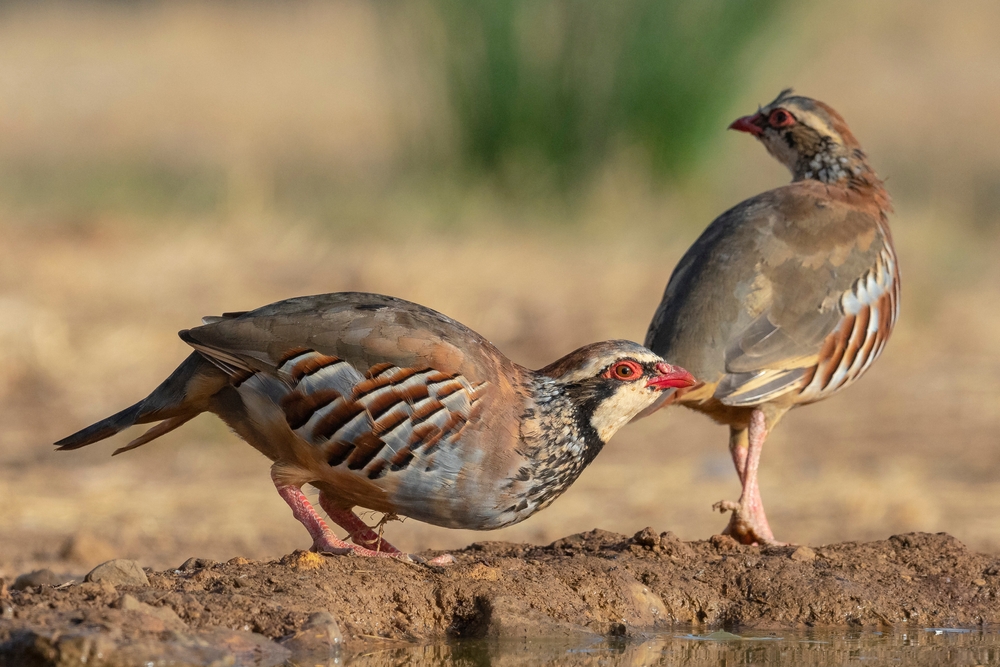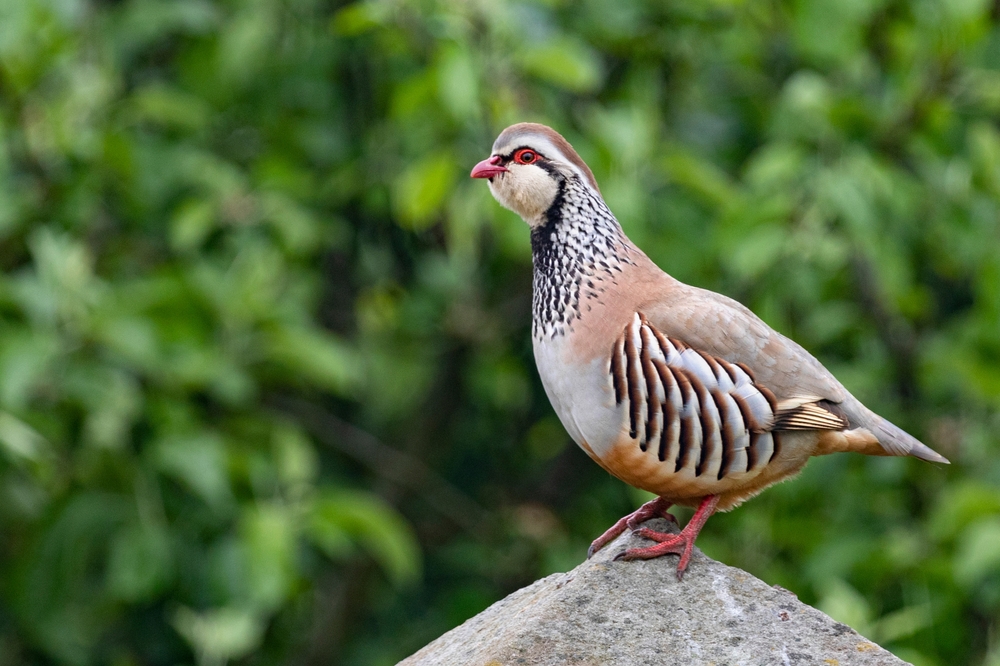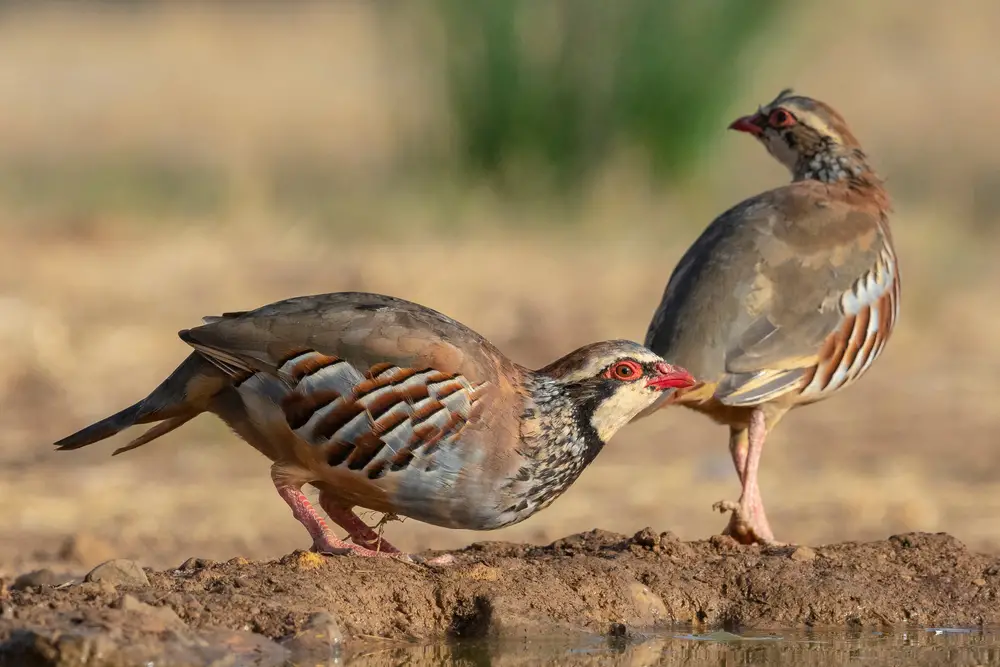Partridge is an ancient sporting bird of the Phasianidae family, closely related to pheasant and quail. It has been a popular gamebird for centuries due to its distinct plumage and flight abilities. The partridge’s natural habitat ranges from Europe, North Africa, Asia Minor, Siberia and North America.
In addition to being utilized in sport hunting, this species also provides food and ornamental feathers for many cultures. This article will explore the history, characteristics, behavior patterns and conservation status of the Partridge.
The first record of the Partridge dates back to 3200 BC when they were regarded as sacred birds by Ancient Egyptians who used their feathers as decorative ornaments on headdresses and jewelry. They have long been prized among hunters across generations both for their beauty and challenge during pursuit.
Their unique coloration allows them to blend into their environment with relative ease while providing a visual treat for observers. Additionally, these birds possess great agility which makes them difficult targets that require skilled shooting skills to bag one successfully.
Partridges are typically ground dwellers but often take refuge in trees or bushes if disturbed or threatened by predators such as foxes or badgers; however they can take off quickly should danger present itself suddenly. With regards to feeding habits, grasshoppers form a major component of the diet along with seeds, grains and fruit depending on availability seasonally.
The International Union for Conservation of Nature (IUCN) Red List classifies the Common Partridge as Least Concern globally due to their wide distribution range and stable population numbers despite human interference through hunting activities over time.

Types Of Partridge
Partridges are a type of game bird found in many parts of the world. They can be divided into four main species: ring-necked, red-legged, chukar and ptarmigan. The ring-necked partridge is native to Europe and western Asia.
It has a small head with a distinctive black collar around its neck and chestnut brown feathers on its back. Its underside is white with dark barring across it. Red-legged partridges inhabit much of southern Europe and North Africa. This species is larger than the ring-necked variety, sporting orangey buff plumage on its body and greyish barred wings.
Chukars are found mainly in India and Pakistan but have also been introduced to other areas such as Britain and New Zealand. These birds have sandy coloured upperparts, darker wings and long legs that give them their characteristic name – ‘chukar’ means ‘long legged’. Finally, there are hill ptarmigans which breed in high Arctic latitudes where they live amongst rocks or tundra vegetation during summer months.
During winter these birds moult into pure white plumage for camouflage purposes against predators. Ptarmigans tend to flock together when not breeding, gathering at low altitudes near food sources such as grain fields or rocky slopes containing edible plants.
In summary, these four types of partridge exist worldwide due to their adaptability; each species having developed distinct characteristics over time in order to survive in different climates, habitats and geographical locations
Migration Patterns
Partridges are migratory birds, displaying seasonal movements between their breeding grounds and wintering grounds. Their migration routes vary in length and complexity depending on the species of partridge.
During spring, they typically migrate from southern areas to northern regions for nesting, while some will travel long distances during autumn to reach warmer climates for the winter season. Migration timing is often influenced by climate or food availability at certain destinations.
The specific migration patterns of a particular partridge species can be identified by tracking its movements over time with advanced technology such as satellite monitoring devices.
These devices provide scientists with detailed information about the bird’s location, helping them map out its migratory routes and understand how it navigates through different environments like forests, wetlands and grasslands. This data can also help determine which habitats are important for the species’ survival throughout its life cycle.
Migration research has shown that partridges use many strategies to ensure successful journeys, such as flying in flocks together or taking advantage of favourable winds when travelling across oceans.
By understanding these behaviours more deeply, conservationists can begin to develop better strategies for protecting partridges’ breeding grounds and wintering sites along their migratory routes.
Habits And Habitat
Partridges are primarily terrestrial birds that inhabit a variety of habitats. Their habitat range includes grasslands, farmland, scrubland and woodlands with an abundance of low vegetation cover.
Partridge prefer open slightly rolling terrain, as they find it easier to run away from predators in this kind of landscape. This type of habitat also provides them with plenty of their preferred food sources like seeds, fruits and insects.
Nesting usually takes place on the ground or within dense shrubs where there is some form of natural protection for eggs and chicks against predators. Roosting sites are typically located within thick bushes and trees at areas which provide shelter from cold temperatures during winter months. During summertime partridges may seek out higher altitudes in order to take advantage of cooler air temperatures.
Habitat destruction due to human influence has been one of the main causes for population declines in many species of partridge around the world. This is mainly caused by agricultural intensification leading to loss of nesting grounds, roosting areas and suitable feeding habitats resulting in reduced reproductive success for partridge populations inhabiting these areas.
Therefore conservation projects aimed at preserving suitable habitat should be encouraged if we want future generations to continue experiencing the wonders of these amazing birds.
Diet And Feeding Habits
Partridges are omnivorous birds, meaning their diet consists of both plant and animal material. They feed on invertebrates such as beetles, spiders, worms, caterpillars and grubs. Additionally, partridges eat plant-based foods like grains, grasses and wild seeds.
Partridge chicks consume a higher quantity of insects than adults due to the nutrient requirements for growth and development.
Partridges typically feed in early morning or late afternoon when temperatures are cooler and predators are less active. During hot weather they may also be seen feeding at midday. When food is scarce, partridges will travel long distances in search of better resources which may include fields with crops that have recently been harvested.
In winter months, flocks of partridges form large groups to gain access to larger food sources like waste grain left behind by farmers during harvesting operations.
Game bird diets should contain an appropriate blend of proteins from both animals and plants so that nutritional needs can be met throughout the year. This includes providing adequate levels of calcium which promotes healthy bones, muscles and feathers.
A variety of fruits and vegetables along with grits from oysters or crushed eggshells should also be available for consumption in order to ensure proper digestion and absorption of nutrients into the body’s systems.
Breeding Behavior
Partridge breeding behavior is largely dictated by the avian reproductive cycle. Breeding season typically takes place between April and May; males engage in courtship activities to attract females, such as strutting, singing and displaying vibrant colors. This process culminates in mating, with a clutch size of around 7-10 eggs produced per female.
The next stage involves incubation, where both male and female take turns brooding for up to three weeks until hatching occurs. During this period, parents are highly protective of their young, regularly engaging in distraction displays that involve flicking wings and emitting alarm calls when predators come too close. After hatching, juveniles remain under parental care for several weeks before they eventually become independent.
In partridge species like the Grey Partridge (Perdix perdix) it has been observed that adults will stay together in small family groups after successful raising of chicks until autumn migration commences or until nesting begins again the following year.
Conservation Status
Partridge is a species of gamebird classified under the family Phasianidae, and it is present in various parts of Europe, Asia, North Africa, and Southwest America. Its conservation status has been listed as ‘Near Threatened’ by the International Union for Conservation of Nature (IUCN) due to its population decline over recent years.
Habitat loss is one of the major factors that contribute towards this population decrease. Partridges usually inhabit open grasslands or agricultural fields surrounded with woody vegetation; however these habitats have become increasingly rare due to human activities such as urbanization and industrialization leading to habitat destruction.
As partridge numbers dwindle, there are several wildlife conservation efforts being made in order to protect them from extinction.
Conservationists aim to introduce effective management strategies which can help reduce their vulnerability by improving local habitats through reforestation programs and providing protection against illegal hunting practices.
Additionally, ongoing research studies are continually working on better understanding how climate change can affect partridge ecology so appropriate measures can be taken accordingly.
With successful implementation of these initiatives, it may be possible to prevent further decreases in partridge populations across different sites worldwide.
Overall, if proper measures are not put into place quickly then the future survival of this species will remain uncertain. Therefore, concerted action must be taken regarding both international laws protecting wild birds and implementing long-term conservation plans for sustainable use of natural resources without compromising the integrity of ecosystems they depend upon.

Hunting Regulations
Partridge hunting is a popular activity in many countries. Hunting regulations vary from state to state, so it is important for partridge hunters to become familiar with laws and regulations that apply in the area where they plan to hunt.
The following are key points of which all partridge hunters should be aware:
- Hunters must abide by hunting laws in accordance with their local jurisdiction.
- Game regulations protect species from over-harvesting, as well as help maintain healthy populations of wildlife.
- Most states have specific hunting seasons when partridge may legally be hunted; these dates can change annually depending on population levels or other factors.
- Bag limits may also be imposed on certain game animals; this helps ensure there will always be enough wildlife resources available for future generations of hunters and non-hunters alike.
Hunting regulations serve an important purpose in protecting both people and wildlife through conservation practices such as season restrictions or bag limits put into place by respective governments.
It is essential that all hunters understand the rules before embarking on any type of hunting trip, whether it’s for small birds like the partridge or larger game species such as deer or elk. By adhering to the established guidelines, we can work together towards maintaining sustainable wildlife populations around the world while enjoying our sport responsibly and safely.
Conclusion
Partridges are a unique and important species of game birds, with many different types that inhabit various parts of the world. Migration patterns can vary from one type to another, as do their habitats and diet preferences. Breeding behavior is also quite varied, ranging from monogamous pairings to polygynous mating systems.
Although conservation efforts have been undertaken in some areas, partridge numbers remain threatened in much of their range due to hunting pressures. Regulations governing hunting should be established and enforced to both protect these birds while still allowing for sustainable harvest practices. In conclusion, partridges are valuable members of our natural environment, requiring careful management if they are to survive into the future.
We must remember that conservation begins at home; by understanding more about this species and implementing sound management practices we can ensure its longevity. It is only through our collective effort that these birds will continue to provide us with enjoyment well into the future.


